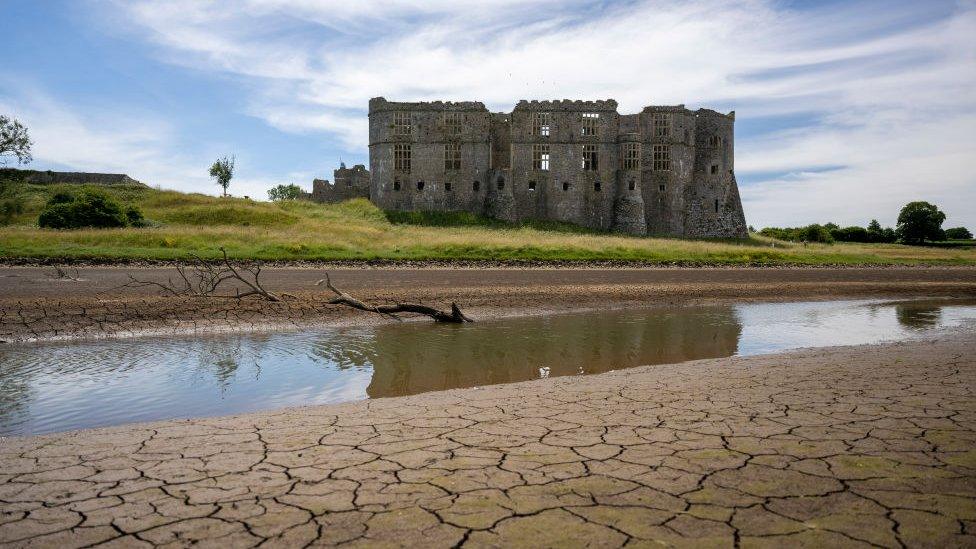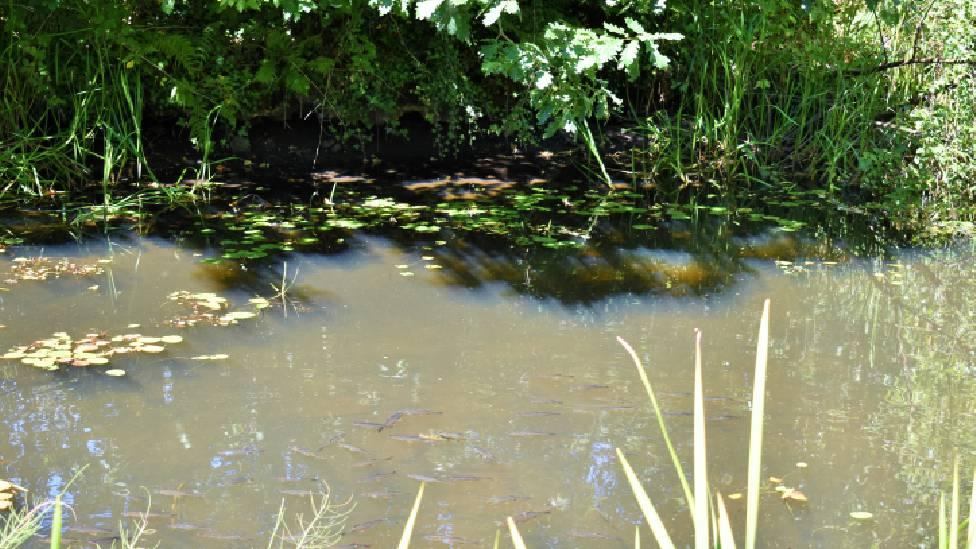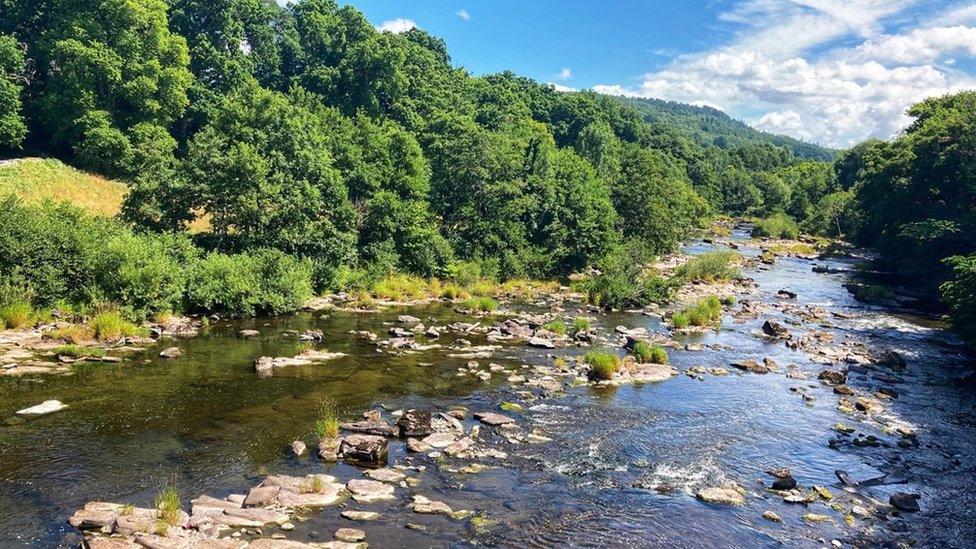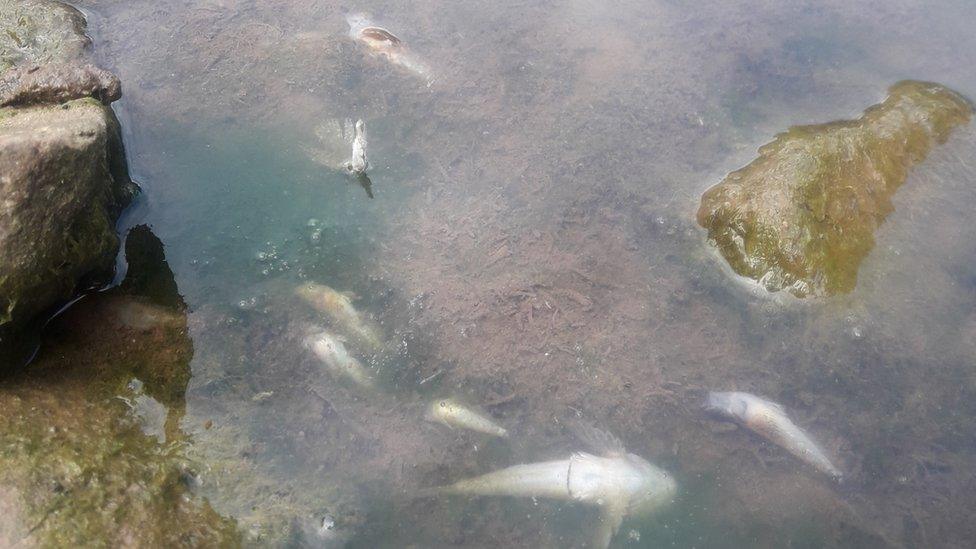Fishing ban as low rainfall sees Wales' river levels drop
- Published

The Carew River at Carew Castle was shallow at low tide on Monday when temperatures soared
Fishing has been banned in two rivers as Wales experiences one of its driest periods on record.
The country has only recorded 66% of its expected rainfall between March and June of this year, leading to concern from wildlife groups.
Many rivers are running low, leading to fishing bans of the Wye and Usk, while volunteers at a canal in Swansea have called for intervention.
Natural Resources Wales (NRW) said it was monitoring incidents.
The lack of rain over the past few months has been followed by the hottest temperatures of the year in Wales, with an extreme heat warning issued for Sunday and Monday by the Met Office.
Temperatures are forecast to reach as high as 34C (93F) on Monday or Tuesday.
Simon Evans said the water levels in Wales' rivers were at "basement levels"
On the Tennant Canal near Swansea, volunteers have said hundreds of fish could die because of low water levels, made worse by the heat.
Save Tennant Canal Campaign Group said approximately 200 small shoal fish were in less than 10 in (25cm) of water.
Volunteers said there was another shoal of just over a thousand fish, about half a mile away, which could also be in danger.
The group estimated the canal was losing an inch (2.5cm) of water every day.

Save Tennant Canal Campaign Group called for professional interventions to help save the fish
Meanwhile, the Wye and Usk Foundation has stopped salmon and trout fishing on both waterways.
Chief executive Simon Evans told BBC Radio Wales Drive his team was monitoring river water temperatures to see if it was necessary to close other fisheries, and for which species.

Rocks are not usually so visible on the River Usk at Llangynidr this time of year
He said: "As far as fishing is concerned, it's the warmth of the water that is our biggest headache, we've already got some fish dying in certain places.
"The problem is you can't keep battering the ecosystem in the way that we are, we're oscillating between monster flood to severe drought, to severe hot to monster flood again. And each one of these events just stresses everything in a new way."
Mr Evans added that the water levels in Wales' rivers were at "basement levels".

"This is a trickle compared to the normally powerful flow at Cenarth Falls," said BBC Wales' Aled Scourfield
The River Teifi has also dropped to a record low level at Pont Llanio, in Ceredigion, of 44cm - about a quarter of its usual level of 1.65m, according to NRW.
Downstream at Llanfair, the river is just 25cm, a sixth of the normal level of 1.5m.
Tracey Dunford, lead specialist of water resources at NRW said: "Wales is currently experiencing a period of prolonged dry weather which coupled with the hot spells affecting the UK has led to low river flows with some smaller rivers drying up.
"Our teams have been monitoring and responding to incidents whilst working with Welsh government, water companies, navigation authorities and other organisation on any updates and emerging concerns."

FANCY A STROLL?: Welsh walks to try this summer
WILD MOUNTAINS OF SNOWDONIA : Five farming families open their gates and share their lives

Related topics
- Published11 July 2022

- Published30 October 2021

- Published29 October 2021
